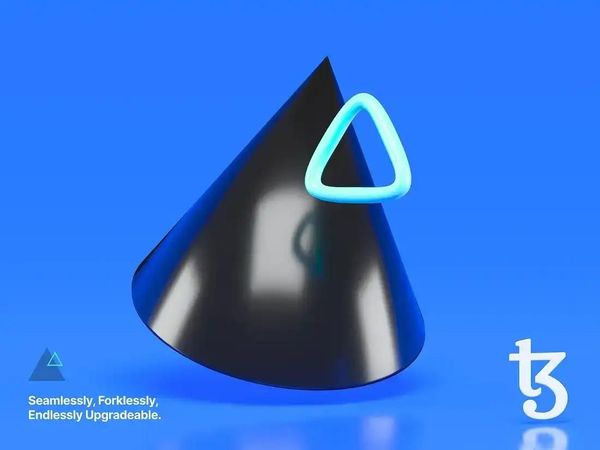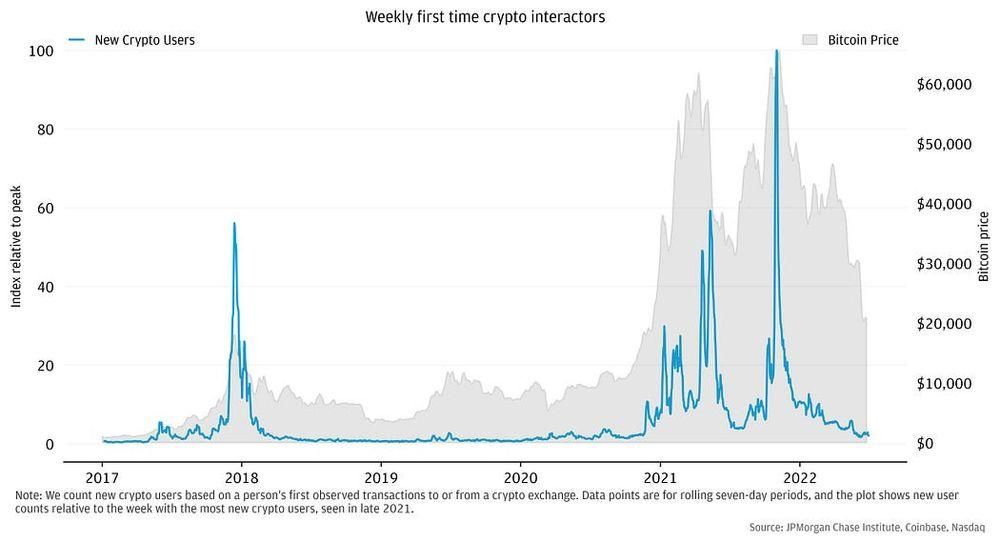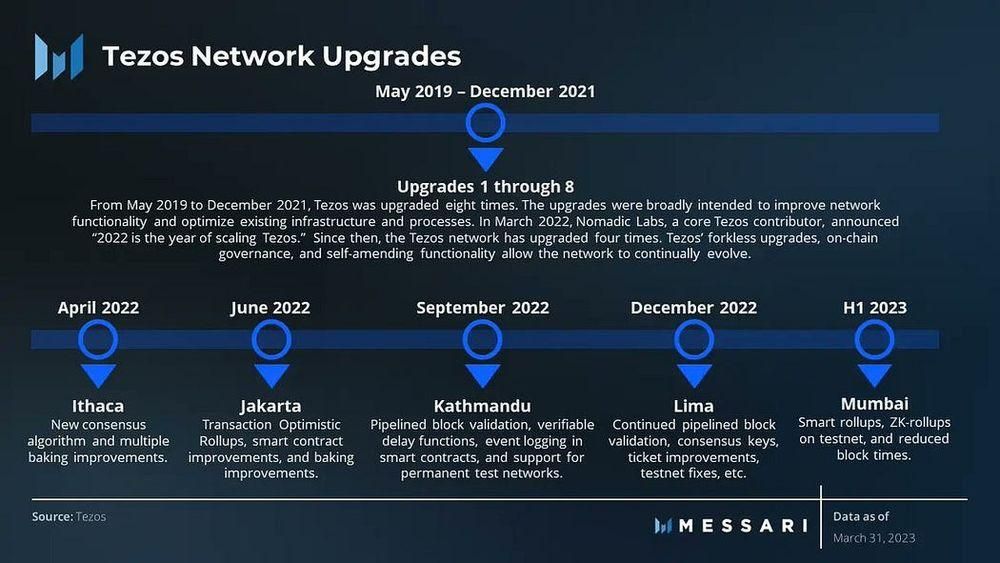How Tezos is Leading Scalability and Layer-1 Development
Take a closer look at the ongoing work focused on Layer 1 (L1) development and scalability.
Originally published at Tezos Commons News
1,100 words, 6 minute read

Earlier in the week, I put out a long Twitter thread with some thoughts on a few things I’ve seen circulating in recent weeks. Given the positive response and engagement I received, I believe it’s worthwhile to expand on those thoughts in more detail.
In this article, I will dive deeper into the broader landscape of blockchain technology and highlight how the Tezos ecosystem is at the forefront of driving scalability and L1 development.
We’re In It For The Tech #
In today’s rapidly advancing world, the introduction of digital alternatives for physical assets is gaining significant momentum. Mainstream audiences have shown immense interest in NFTs, in-game currencies, and other digital assets.

According to JP Morgan’s research, approximately 15% of their customer base has owned or bought cryptocurrencies. Although this doesn’t directly measure active users, it indicates a clear upward trend towards public acceptance.
Blockchain technology has vast potential across various industries. Research from IBM reveals its applications in healthcare, supply chain, media, advertising, banking, insurance, and more.
However, for this technology to be widely adopted and beneficial to society on a large scale, we need to address a crucial challenge: scalability. How can we expect widespread adoption when payment systems like Visa can process tens of thousands of transactions per second, while most L1 networks can handle only a fraction of that?
In my opinion, scalability is the most critical issue to tackle in the blockchain space. Solving this problem is paramount for enabling the creation of scalable apps and networks. Overcoming this obstacle will drive the broader adoption of blockchain technology.
Amidst the meme-fueled culture and speculative value creation, there are genuine endeavors to achieve this milestone. Few example, look to the work being done within the Tezos ecosystem, which aims to deliver 1 million transactions per second (TPS) through L2 and L1 scalability enhancements.
Tezos has made impressive progress in core protocol development and scalability. Let’s highlight how Tezos is leading the way in L1 development and scalability enhancements.
A Unique Approach to Scaling and Development #
For those who may be new to the blockchain space, the idea of scalability or L1/L2 development can and likely will cause a headache. To put things into perspective, imagine you have a special notebook where you can write things down and no one can change what you write. This metaphorical notebook represents the Tezos blockchain.
Blockchains have inherent limitations on the number of activities or entries that can be recorded simultaneously without causing congestion. Similar to how traffic congestion occurs due to an accident on the road, a blockchain experiences congestion when network activity spikes with numerous simultaneous access attempts.
To prevent congestion, scalability solutions come into play. The Tezos network features a unique on-chain governance mechanism, which allows for the introduction of scalability optimizations in a well-defined manner. In fact, we have witnessed this mechanism being tested and implemented over a dozen times.

Source: Messari
Unlike Proof of Work-based models and most Proof of Stake blockchains that require creating a whole new blockchain for network-wide changes, Tezos’ unique design offers a distinct advantage. It allows the enabling of the latest blockchain technologies and features onto the main network without the need for a hard fork or network split.
This flexibility, combined with its practical implementation in over 14 instances, positions Tezos as one of the best solutions for creating scalable applications among different L1 networks.
With that said, it’s worth highlighting what these upgrades have accomplished and how they relate to scalability and enhance the core protocol.
Scaling Today, Not Tomorrow #
Since Nomadic Labs, a Tezos core development team, released their scaling roadmap for the Tezos ecosystem, several upgrades have been implemented. Let’s examine each upgrade and explore their significance in terms of scalability and core protocol enhancements.
- Ithaca 2: Replaced the previous consensus algorithm (Emmy*) with Tenderbake, increasing TPS and throughput for the main protocol. Additionally, this upgrade reduced the requirement for operating a baker from 8,000 tez to 6,000 tez.
- Jakarta 2: Eliminated the usage of the term roll which described how much tez was required to operate a baker. Also introduced one of the first L2 scaling solutions for Tezos known as Transaction Optimistic Rollups (TORUs).
- Kathmandu: Introduced another L2 scaling solution known as Smart Contract Optimistic Rollups (SCORUs) as well as validation pipelining efforts geared towards increasing throughput via L1.
- Lima: Introduced continued efforts toward validation pipelining as well as consensus keys updates and improvements to tickets.
- Mumbai: Smart Rollups were activated on the mainnet enabling anyone with dedicated computational resources to deploy decentralized WASM applications. Additionally, the upgrade reduced block times from 30 to 15 seconds.
- Nairobi: Introduced new updates for Smart Rollups, up to an 8x increase in TPS for certain manager operations, improved gas model, and the renaming of endorsements to attestations.
It’s easy to gloss over all these upgrades and not realize that with Ithaca2, the Tezos network quite literally overhauled an entire consensus algorithm and replaced it with Tenderbake. With Jakarta, an L2 scalability enhancement known as TORUs was introduced allowing for the exchange of assets, but was not to be used in the execution of smart contracts.
The missing part in terms of the execution of smart contracts was introduced in Kathmandu with SCORUs. Both these features are described as being L2 enhancements, but it’s important to note that they are enshrined in the Tezos protocol.
Fast forward to this year, Mumbai resulted in the activation of Smart Rollups on mainnet and cut block times in half. When it originally took 30 seconds to confirm a transaction and propagate a block on mainnet, that number was reduced to 15 seconds.
Nairobi brought us even more updates for Smart Rollups as well as an increase in up to 8x in TPS for all manager operations. If you’re using Tezos-based DeFi or NFT marketplaces, you’ll notice the uptick in TPS. This is just the beginning of the efforts around scaling and growing the Tezos network.
Looking Forward #
As the blockchain space continues to introduce new technologies and use cases, Tezos stands ready to incorporate the best innovations of today and tomorrow. With a proven track record of over 14 successful upgrades, Tezos remains one of the leading networks for creating scalable applications. Addressing scalability challenges remains crucial, and the ongoing work within the Tezos ecosystem is laying the foundation for the next wave of blockchain adoption.